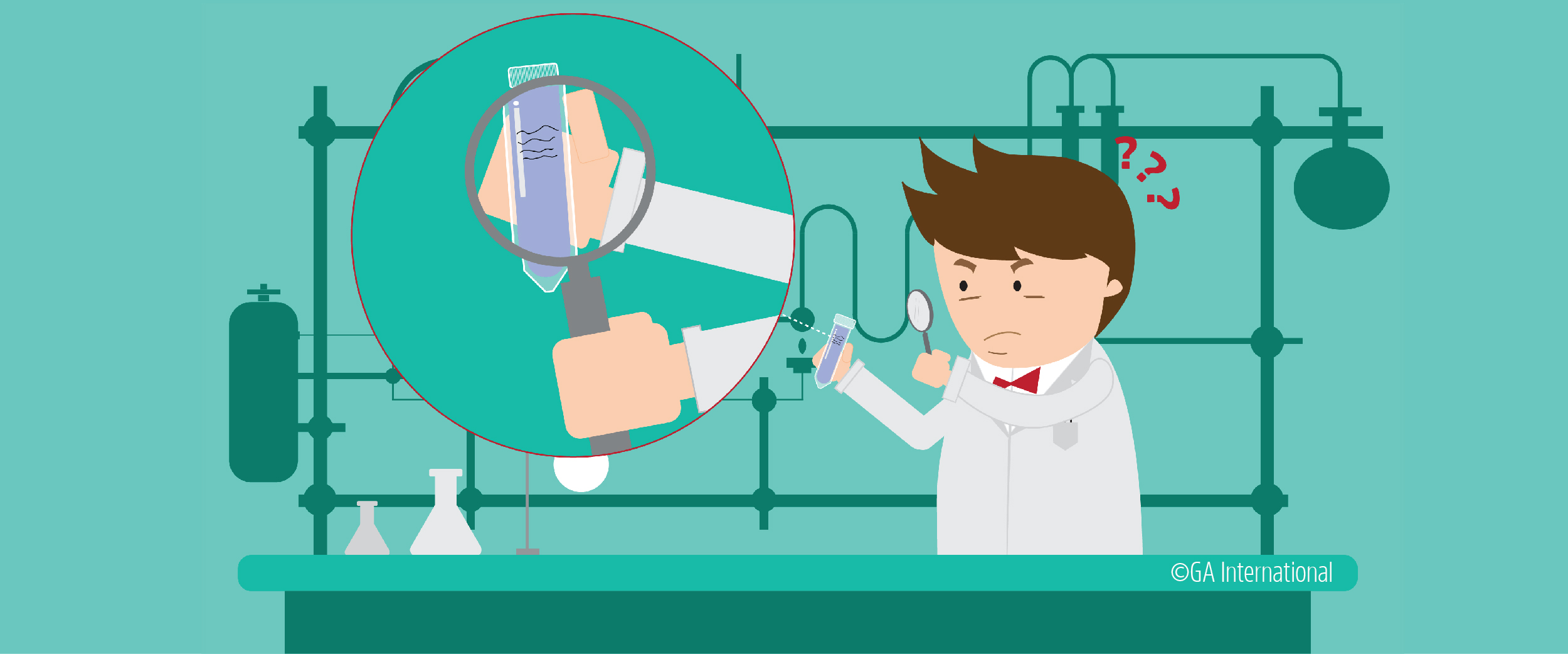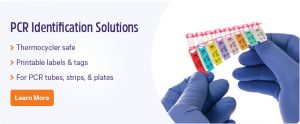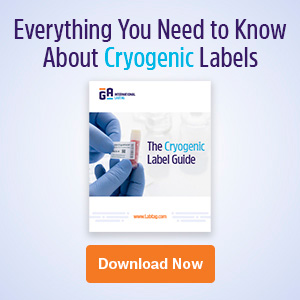 Everyone, at some point in their scientific career, has come across a technique that is made far more difficult than necessary because of how difficult it is to label their samples. However, whether your labels keep falling off, or the ink is continually smudging or fading, there’s usually an efficient solution to the problem. Below, we’ve listed several of the top experimental techniques that drive scientists crazy when it comes time for sample labeling.
Everyone, at some point in their scientific career, has come across a technique that is made far more difficult than necessary because of how difficult it is to label their samples. However, whether your labels keep falling off, or the ink is continually smudging or fading, there’s usually an efficient solution to the problem. Below, we’ve listed several of the top experimental techniques that drive scientists crazy when it comes time for sample labeling.
#1 – Histochemistry
Much of histochemistry relies on harsh solvents that can quickly cause your labels to fail (for a more complete breakdown of histochemistry, you can go here and here). These labels encounter ethanol during dehydration, xylene when the samples are being cleared, and molten paraffin wax, used to embed the tissue for sectioning. Once sectioned, the slides are immersed in histological stains, such as eosin and hematoxylin. All these chemicals can cause your labels to lose adhesion as well as smudge or smear the printout. Thus, labels used in histochemistry need to be resistant to a host of chemicals—xylene, eosin, and hematoxylin in particular—as well as hot paraffin wax. Automated slide printers are available on the market that will directly print any information onto the glass slide. However, these printers can be expensive and don’t produce a very resistant printout, making the use of thermoplastic chemical-resistant labels for these slides the most recommended option, as they provide superior protection against eosin, hematoxylin, and other chemicals.
#2 – Immunohistochemistry
Immunohistochemistry (IHC) gets its own spot next to histochemistry for one reason: antigen retrieval. Prior to immunostaining, specimen sections must be treated with a series of buffers and boiled to eliminate methylene bridges between molecules that are formed during fixation, thus re-exposing antigenic sites and making it possible for antibodies to bind their target epitope. Using lamination along with your chemical-resistant labels will help ensure that your labels remain affixed to your slides as they’re processed.
Labels for immunohistochemistry
#3 – PCR Sample Labeling
Both PCR and quantitative PCR (qPCR) use containers that are extremely difficult to label properly. PCR uses small 0.2 mL tubes, providing little room to write anything legibly, and qPCR often uses 96-well plates that are sealed with a translucent piece of film, which must remain clear, and with no skirts on which to write. For PCR tubes, dot labels will provide some room to print or write legibly; however, the optimal solution is PCR-TagTrax™, a printable adhesive-free, versatile tag that comfortably fits around each tube. The glove-friendly tag can be used for either high-profile PCR tubes and strips or non-skirted qPCR plates, is compatible with almost all PCR thermocyclers and is thermal-transfer printable. PCR-TagTrax provides far more space to identify your samples and can be combined in an array of different configurations that allow you to both label PCR samples for use in thermocyclers as well as for storage in lab freezers. You can even pull off the end-tab from the tag, tape it in your lab book, and use it as a reference in your lab records.
#4 – Vitrification
Most labs that handle primary and immortalized cell lines use vitrification to freeze cells. This involves treating cells with a cryoprotectant, like dimethyl sulfoxide (DMSO), then freezing the cells in liquid nitrogen, all of which may cause your labels to fail. The simple solution is to apply cryo labels that are resistant to both DMSO and liquid nitrogen (-196°C/-321°F), with a thermal-transfer printout. For cell lines that have been already stored away and require re-labeling, certain labels, like CryoSTUCK®, will affix to the vial, even if it’s still freezing cold.
The vitrification process can prove even more difficult for assisted reproductive technology labs that perform in vitro fertilization (IVF). Embryos, eggs, and sperm need to be stored in low-VOC cryo straws identified with cryogenic labels resistant to rapid freezing and exposure to cryoprotectants (i.e. DMSO).
Labels for Vitrification Straws
#5 – Western blot Sample Labeling
Western blots take a lot of patience to get right, and even more to label appropriately. From the time your samples enter the SDS-PAGE gel to when they are probed with antibodies on a PVDF or nitrocellulose membrane following the transfer step, there’s no efficient way to keep track of them. The best option, for now, is to simply write in fine, dark pencil on the blot as much information as possible, while storing your blot in a small box or bag identified with a deep-freeze label (ideally printed with a thermal-transfer printout to resist cold storage).
#6 – Transmission electron microscopy
Sample labeling and preparation for transmission electron microscopy (TEM) can pose several challenges. The first hurdle is securely identifying the sample preserved in a resin block. The label for these samples must be included inside the resin prior to hardening, and therefore must be resistant to liquid resin as well as baking. Moreover, the resin blocks can be stored for long-term use, requiring an identification solution that will last. ResiTAG™ labels, printed with barcodes (again, using a thermal-transfer printer), can be inserted into the mold, providing a way to identify these samples with serialized numbering as well as 1D or 2D barcodes for long-term storage.
Labels for Transmission electron microscopy
#7 – Sterilization
Sterilization can be performed in many ways, each of which pose risks to your labels: steam autoclave, ethylene oxide gas, or gamma irradiation. Autoclaves, which expose your labels to elevated temperatures and pressure, are used for general labware, while ethylene oxide sterilization and gamma irradiation are both used primarily for sterilizing healthcare devices and instruments. Autoclave-resistant labels with a thermal-transfer printout are an efficient solution for all three sterilization methods, as they can resist temperatures up to 150°C, pressures up to 30 psi, high relative humidity, chemical exposure, and gamma levels up to 50 KGy.
LabTAG by GA International is a leading manufacturer of high-performance specialty labels and a supplier of identification solutions used in research and medical labs as well as healthcare institutions.


